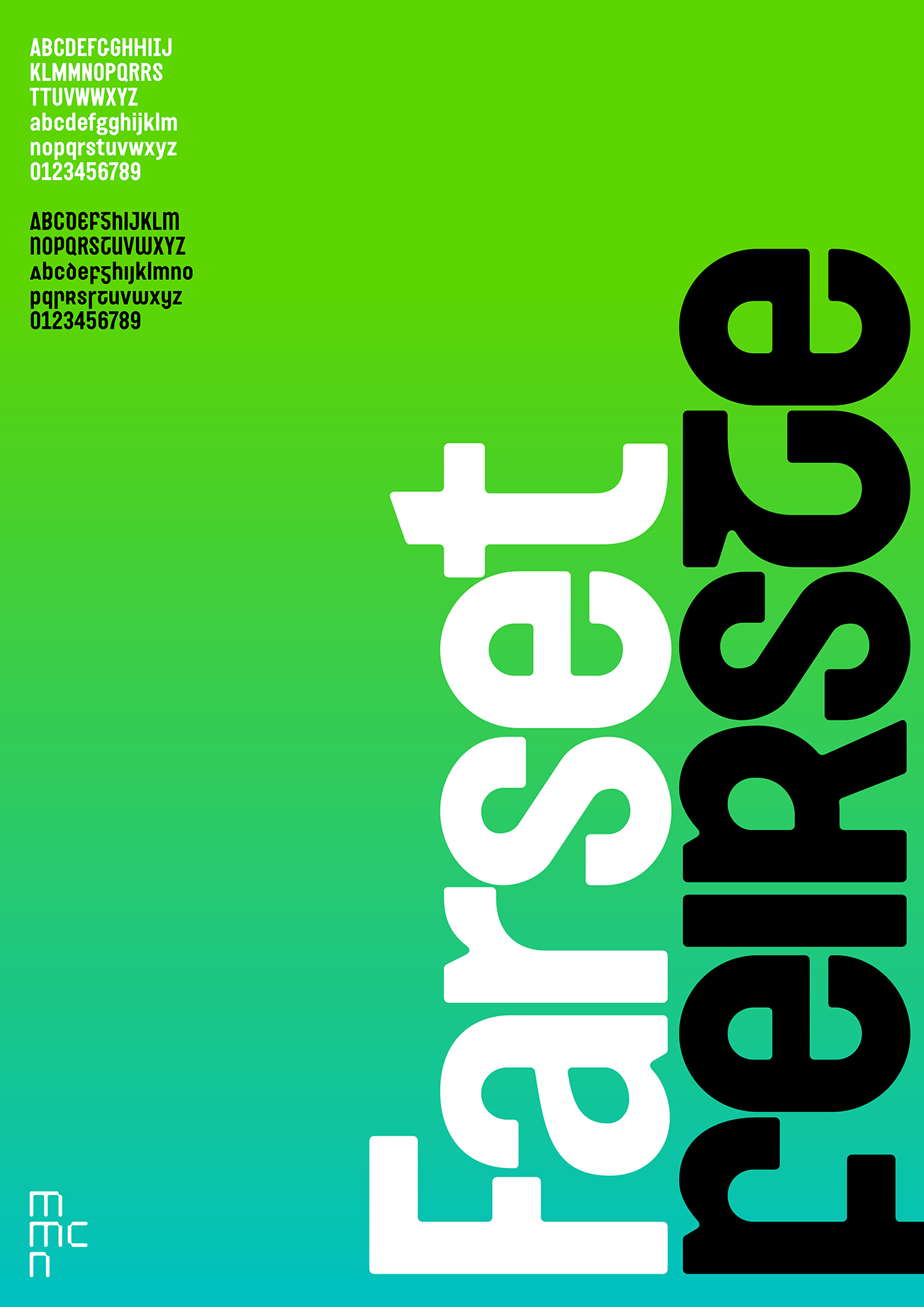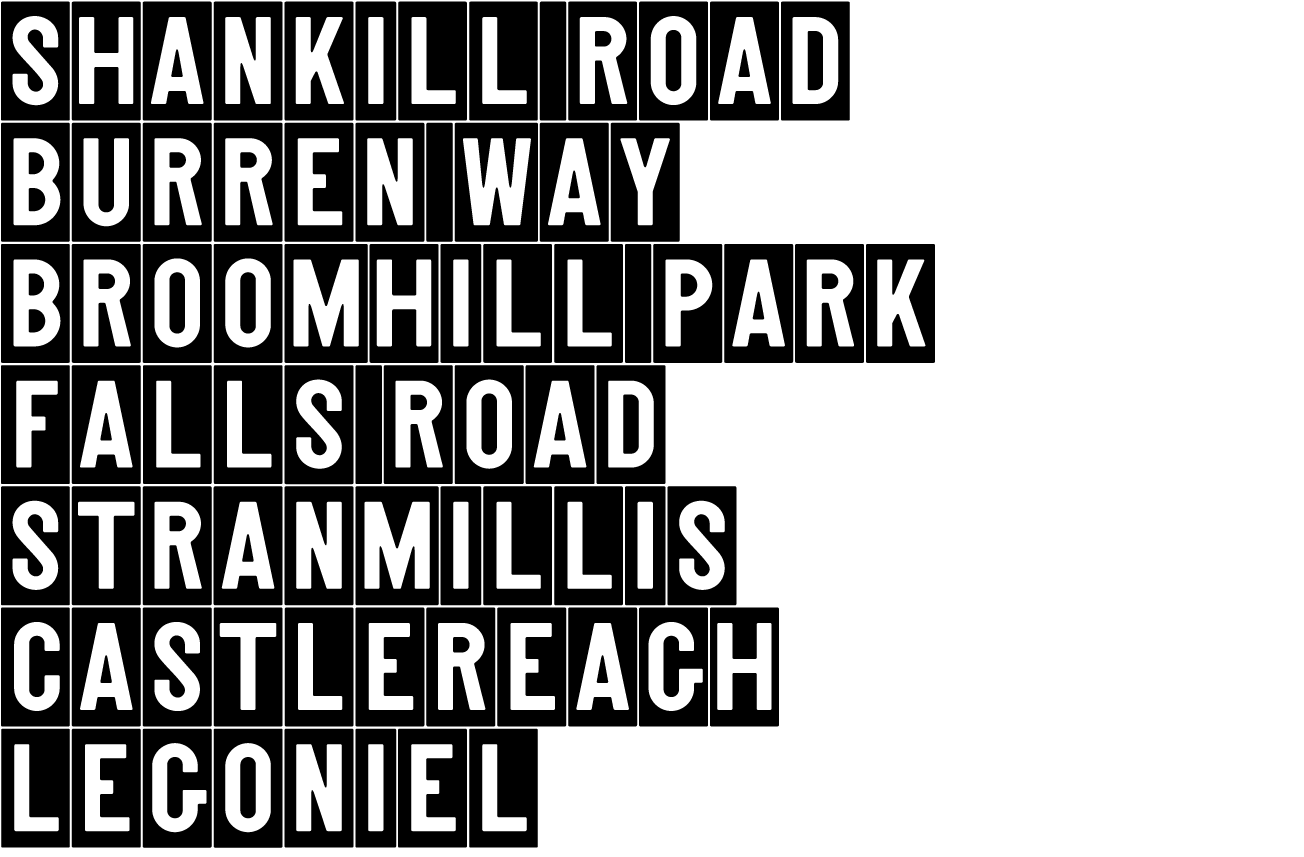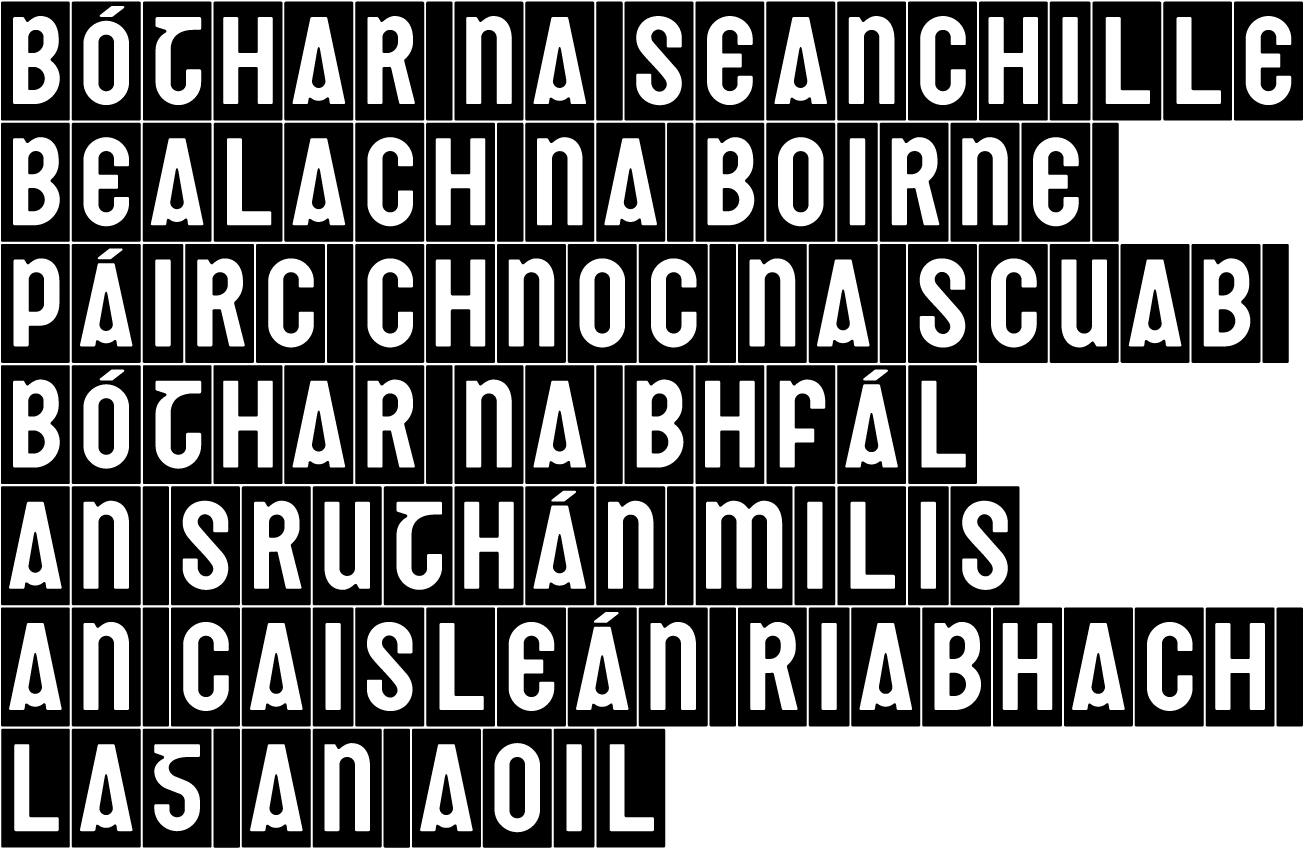The typefaces are named in their respective languages to reflect their local identity. The gaelic version, Feirste, honours Belfast’s Irish name, Béal Feirste, (Béal meaning ‘rivermouth’ and ‘feirste’, a sandbar), while the latin version, Farset, adopts the name of the river that flows from the hills above the city to where Belfast was founded on a sandbar.


